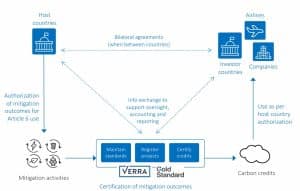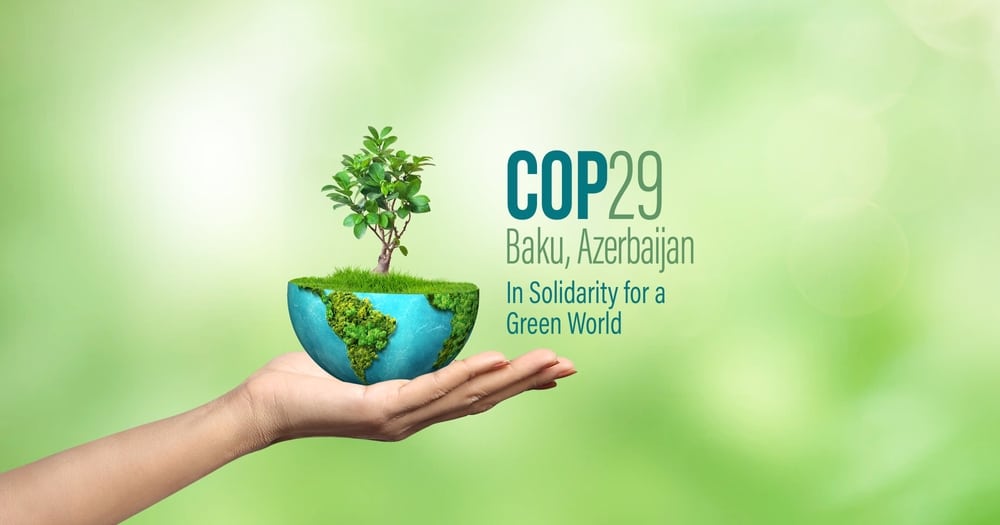Singapore’s National Climate Change Secretariat (NCCS) is working with two major carbon credit programs, Gold Standard and Verra’s Verified Carbon Standard (VCS). Their goal is to create a new protocol that will help countries meet their climate targets under Article 6.2 of the Paris Agreement. The newly formed Article 6.2 Crediting Protocol will simplify global efforts to cut emissions and promote sustainable growth.
Over the past year, NCCS, Gold Standard, and Verra have worked closely with governments and climate experts to shape initial recommendations. They plan to finalize the Protocol after COP29 and begin implementation in 2025, giving countries a practical tool to reach their climate goals through strong international cooperation.
Benedict Chia, Director-General (Climate Change), NCCS, Singapore, said,
“It is important to have a protocol that facilitates Article 6.2 cooperation between independent crediting programs and governments. This would ensure that Article 6.2 can operate efficiently.”
Article 6.2: A Pathway to Global Climate Cooperation
Broadly speaking, Article 6.2 of the Paris Agreement helps countries achieve their Nationally Determined Contributions (NDCs) and advance sustainable development. It further leverages governments and private sectors to work together through carbon credit markets to reach their climate goals.
With established carbon crediting programs provided by Gold Standard and Verra, governments can certify emission reductions and removals without creating new standards from scratch. This reduces complexity and ensures quantified results.
Subsequently, this collaboration will also serve a similar purpose in reducing climate efforts and allowing countries to focus on impactful actions.
Margaret Kim, CEO of Gold Standard, expressed her opinion in the following statement,
“If a market is to be trusted, it must be built on solid foundations. For Article 6 to be reliable and efficient, governments and standards need to work together. These initial recommendations outline how, by doing so, they can deliver impact for both the climate and sustainable development.”
Mandy Rambharos, CEO of Verra noted,
“Independent crediting programs offer comprehensive standards and verification mechanisms that are primed and ready for use by governments in their cooperation under Article 6. The positive reactions we are already receiving from government stakeholders demonstrate how independent standards, that have grown up in the voluntary carbon market, have built a robust and credible foundation that can seamlessly integrate into the infrastructure of compliance markets and Article 6. Together, we can enable these new markets to be operational and effective much more quickly than otherwise possible.”
Collaborative Efforts to Shape Initial Recommendations
The NCCS, Gold Standard, and Verra officially announced their partnership at COP28 in December 2023 with a shared ambition, as described above. They have been working with governments and climate experts to develop the initial recommendations for this protocol.
Without this unified approach, countries might take the risk of inconsistent paths, which could slow down or complicate international cooperation under Article 6.2.
The initial recommendations or insights will outline key ideas and steps that will shape the Protocol. However, they expect to release the final version only after COP29, containing the outcomes of the summit.
Furthermore, the three organizations will continue to engage and seek feedback from stakeholders when developing the final Protocol. This is to ensure that it can serve as a “practical enabler” and complement Article 6.2 rules that are adopted within the United Nations Framework Convention on Climate Change (UNFCCC).
Additionally, the report calls on governments to take steps to limit regulatory and market risk associated with Article 6.2 transactions. For example, by adopting tools like robust templates for Letters of Authorization.
The final protocol will be ready for implementation in 2025.
Key Components and Timelines for the Article 6.2 Playbook
Image: Snapshot of Article 6.2 Crediting Protocol 2024

Source: Verra
COP29 Milestone – November 2024
At COP29, stakeholders will introduce the initial recommendations for the Article 6.2 Crediting Protocol. These guidelines will offer insights on how to harmonize Article 6.2’s implementation across Independent Carbon Programs (ICPs). The focus will be on providing clear guidance for countries, ICPs, and other involved entities to ensure streamlined and effective climate action.
Starting 2025 – Protocol Development and Implementation
From 2025 onward, the development of the full Article 6.2 Crediting Protocol will begin. This will include a specialized data protocol aimed at standardizing how ICPs report to countries. These protocols may also include recommendations for additional reporting to guarantee the full traceability of credit transactions, linking them to corresponding adjustments where required, based on outcomes from COP29.
Ongoing Engagement and Outreach
Regular communication and collaboration with countries, ICPs, and other stakeholders will continue. The goal is to build awareness, secure support, and deepen understanding of the Article 6.2 Crediting Protocol’s implementation, ensuring widespread engagement and effective adoption.
Carbon Credits vs. ITMOs: Clear Lines for Effective Climate Reporting
The Protocol establishes a clear distinction between two elements: carbon credits and Internationally Transferred Mitigation Outcomes (ITMOs). Carbon credits represent the direct mitigation results achieved by projects and are recorded on Independent Carbon Program (ICP) registries.
In contrast, ITMOs reflect the accounting implications of these credits under Article 6.2 which are tracked on national registries. This approach allows private investors to engage in credit transactions. At the same time, it ensures governments track these transactions in their Article 6.2 reports and helps countries meet their Nationally Determined Contributions (NDCs).
We have read in our previous article about COP29 making a breakthrough in global climate action during its opening day. Nearly 200 governments agreed on a framework under Article 6.4 of the Paris Agreement, backed by the UN to create a stronger demand for carbon credits, especially to fund climate projects in developing nations.
For this case, let’s wait and watch how Article 6.2 unfolds at COP29 to meet the unified goal of Singapore’s National Climate Change Secretariat (NCCS), Gold Standard, and Verra.

